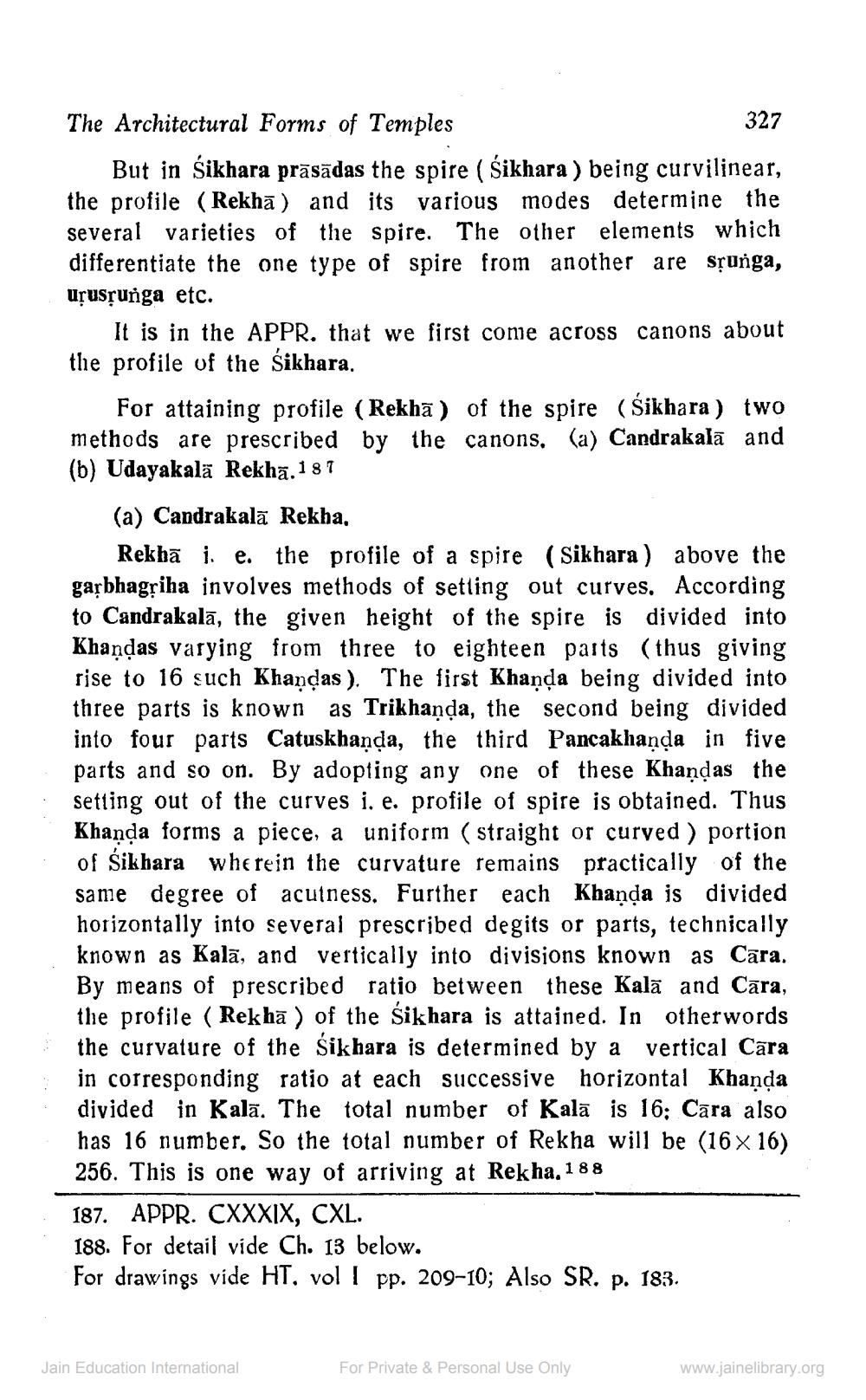________________
The Architectural Forms of Temples
327 But in Sikhara prāsādas the spire (śikhara ) being curvilinear, the profile (Rekhā) and its various modes determine the several varieties of the spire. The other elements which differentiate the one type of spire from another are sệunga, uļussunga etc.
It is in the APPR. that we first come across canons about the profile of the Sikhara.
For attaining profile (Rekhā) of the spire (Sikhara ) two methods are prescribed by the canons, (a) Candrakalā and (b) Udayakalā Rekhā. 187
(a) Candrakalā Rekha,
Rekhā i. e. the profile of a spire (Sikhara ) above the garbhagộiha involves methods of setting out curves. According to Candrakalā, the given height of the spire is divided into Khaņdas varying from three to eighteen paits (thus giving rise to 16 such Khandas ). The first Khanda being divided into three parts is known as Trikhanda, the second being divided into four parts Catuskhanda, the third Pancakhanda in five parts and so on. By adopting any one of these Khaņdas the setting out of the curves i. e. profile of spire is obtained. Thus Khanda forms a piece, a uniform (straight or curved ) portion of Sikhara wherein the curvature remains practically of the same degree of acuiness. Further each Khanda is divided horizontally into several prescribed degits or parts, technically known as Kalā, and vertically into divisions known as Cara. By means of prescribed ratio between these Kalā and Cara, the profile (Rekhā) of the śikhara is attained. In otherwords the curvature of the Sikhara is determined by a vertical Cara in corresponding ratio at each successive horizontal Khanda divided in Kalā. The total number of Kalā is 16: Cara also has 16 number. So the total number of Rekha will be (16 x 16) 256. This is one way of arriving at Rekha, 188 187. APPR. CXXXIX, CXL. 188. For detail vide Ch. 13 below. For drawings vide HT, vol I pp. 209-10; Also SR. P. 183.
Jain Education International
For Private & Personal Use Only
www.jainelibrary.org




